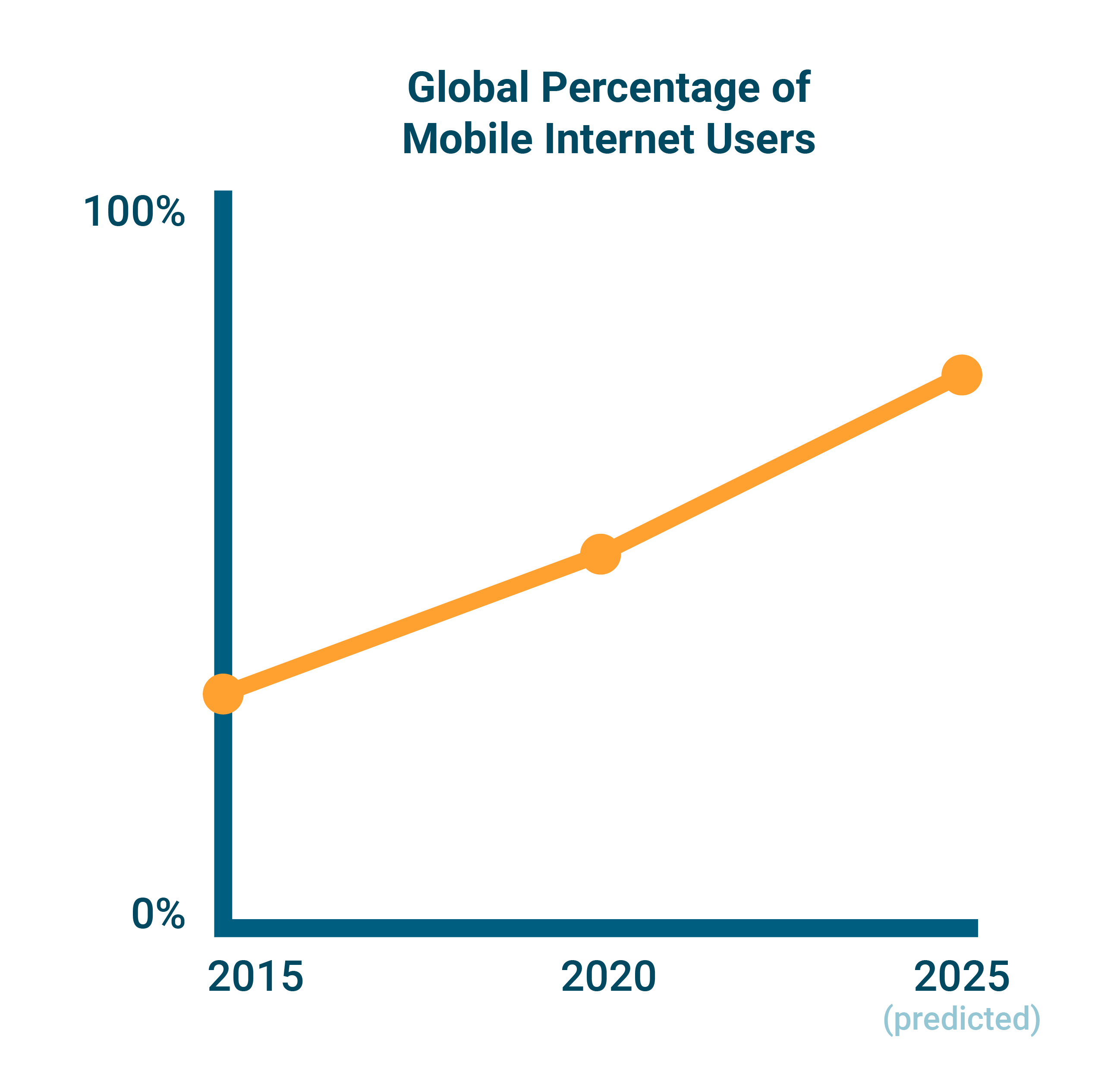Desktop-First is Dead

The Switch to Mobile-First Indexing
The transition to mobile-first indexing has been in the works for years. Google announced that they were experimenting with the concept back in 2016. In July 2019, they announced that mobile-first indexing was officially enabled by default for all new websites.
What Does This Mean?
For the last few years, Google has predominantly used the content on the mobile version of your website for indexing and ranking within the search engine.
If a smartphone Googlebot crawls your pages and encounters functionality issues, or even worse, if you don’t have a mobile-friendly version of your site at all, your Google search ranking is significantly impacted.
47% of businesses don’t have mobile-friendly websites. Not sure if your site is mobile-friendly? Google has a tool for that.
Mobile > Desktop
51% of the global population only accesses the internet from their smartphones. This number is expected to jump to 72.5% by 2025. Providing a seamless user experience on mobile is crucial.
A Rise in Mobile Conversions
Mobile conversions rates are up 64% when compared with the average desktop conversion rates. If you have an e-commerce portion on your site, users should be able to quickly and easily make a purchase without running into any issues on their phone.
Appearance is Everything
Your website is a direct reflection of your business and often the first impression you’re making with prospects. 46.1% of people say a website’s design helps them decide if a company is credible or not. It’s imperative that users feel safe to browse and make purchases on your site without the worry of their information being compromised.
Mobile-first is Content First
When designing for mobile-first, you have to prioritize your content first and foremost. As you’re essentially designing for the smallest screen possible, you need to make sure that your most important information is front and center to users. Don’t bury information with overdesigning.
Efficiency = Conversions
Favor functionality over everything. You need a site that will load quickly for a viewer and be easy to navigate. 53% of mobile website visitors will leave if a webpage doesn’t load within three seconds.
Making sure that your website is fully functional and only contains the most relevant information is often the difference between someone converting or bouncing from your website. Having a high bounce rate could eventually have a negative impact on your SEO as well.
Accessibility in Design
ADA compliance is not just a suggestion, it’s a legal requirement to ensure that everyone can access your website equally. Text size, the ability to zoom and alt text on images are just a few of the factors that should be taken into account when optimizing your website for accessibility.
How They Benefit Each Other
Accessible design and mobile-first design go hand-in-hand. For example, when designing for a smaller screen on a mobile device, you have to ensure that the text is readable, which in turn makes it more accessible for people who are hard of seeing. Every adjustment we make to help people living with disabilities in turn helps everyone.
Evaluating Your Own Website
If you had a site designed before the summer of 2018, it’s probably not mobile-friendly by 2020 standards. Don’t panic. Schedule a free 30-minute consultation with a Smirk team member today to assess your website. We can help get your website back on track, whether it’s just making a few simple adjustments or doing an optimization overhaul.
Recent Posts
Top 10 October 2023 Social Media Updates
The new year will be here before we know it! Now's the time to reflect on how your biggest marketing initiatives have performed over the last year, from social media posts to ad campaigns. Take the time to identify the areas that you excelled at and where you can find...
Get to know Zachary, Smirk’s Newest Digital Content Specialist
Hello! I’m Zachary, Smirk’s newest Digital Content Specialist. I am excited to join the Smirk family and embark on a fantastic journey with my fabulous new teammates. Here is a little bit about me. Early Adventures I grew up in a small town called Choctaw, Oklahoma. I...




0 Comments